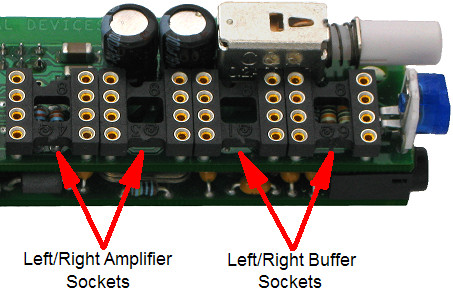 Links: Home Products: Headphone Amplifiers Cables Chips & SOIC Adapters Buy Now: XM6 Amplifier XM5 Amplifier XM4 Amplifier Cables Chips & SOIC Adapters Lithium Battery & Charger FAQs: XM6 Faq XM5 Faq XM4 Faq Payments & Shipping Shipping Costs Photo Gallery: XM6 Gallery XM5 Gallery XM4 Gallery Downloads Satisfaction Guarantee / Warranty Why Buy? Contact Us Copyright © 2015 Practical Devices Corporation. All rights reserved. |
Your XM6/XM5 has four DIP sockets:
 The AD8397 DoubleCat chip has both amplification and buffering built-in. See below. If you are an advanced user, and wish to experiment, there are many other amplifier chips which you can use, as long as they match the semi-standard single-amp pinout of the OPA134. You can also use chips in a surface-mount SOIC package, by using the WhiteCat SOIC-to-DIP adapter. Buffer Chips:
|
||||||||||||||



